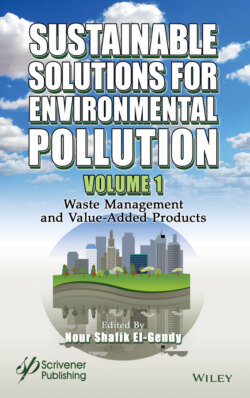Читать книгу Sustainable Solutions for Environmental Pollution - Группа авторов - Страница 20
1.3.3 Bio-Butanol
ОглавлениеBio-butanol is another increasingly popular platform chemical that can also be used as liquid biofuel or additive to fossil fuel due to high energy content (27.08 MJ/l) and compatibility with combustion engines (Kumar and Gayen, 2011). The fermentation process driven by solventogenic Clostridia has been widely used for biobutanol production from carbohydrates-rich feedstock due to its low capital cost compared to the petrochemical butanol production process (Elbeshbishy et al., 2015). Before 2005, butanol was mainly used for the synthesis of other industrial chemicals. After being recognized as a biofuel, the demand for butanol has considerably increased in the last 15 years (Kumar and Gayen, 2011). The global market of biobutanol is now expected to reach USD 17.78 billion by 2022 (Grand View Research, 2020).
Low biobutanol yield, as well as production rate, have been identified as major bottlenecks for wide-scale application of fermentative biobutanol production (Elbeshbishy et al., 2015). Over the years, various strategies, including the deployment of genetically modified Clostridia and non-Clostridia organisms as well as designing novel fermentation systems, have been considered for alleviating these bottlenecks. In recent years, a few studies investigated biobutanol production via EF of glucose with pure-culture Clostridium species (Choi et al., 2014; Engel et al., 2019; Mostafazadeh et al., 2016). Choi et al. (2014) studied cathodic EF of glucose with pure culture Clostridium pasteurianum DSM 525 in a dual-chamber EF system. The authors found that C. pasteurianum could produce butanol by utilizing electrons from both cathode and substrate (glucose). Although NADH generation from electricity was trivial as compared to that generated from glucose, EF could increase butanol production by 2.5 times over the control fermenter. Thus, their results suggested a metabolic shift in reduction pathways in C. pasteurianum due to the applied potential.
A study by Mostafazadeh et al. (2016) also reported enhanced biobutanol yield (g butanol/g consumed glucose) and productivity (g butanol/L-h) in cathodic EF using pure-culture C. pasteurianum. Compared to the control (i.e., conventional fermentation), butanol yield and productivity increased by 29% and 30%, respectively. Furthermore, their study highlighted the importance of process optimization of EF for biobutanol production. The authors investigated the effects of various process parameters, including glucose concentration (86.3-153.6 g/L), temperature (27.6-39.4°C), and applied voltage (0-2.6 V) using statistical design of experiment in cathodic EF of glucose to biobutanol using pure-culture C. pasteurianum. The maximum biobutanol concentration of 13.31 g/L butanol was achieved at an applied voltage of 1.32 V under an operating temperature of 33.51°C and at a glucose concentration of 120 g/L. The glucose concentration ≥140 g/L introduced inhibition and led to a decrease in butanol yield. Furthermore, the authors also compared the impact of cathode electrode materials on butanol production. The results showed that up to an applied voltage of 1.5, graphite felt as cathode could provide higher butanol concentration as compared to the stainless-steel electrode. However, with the applied voltage >1.5 V, the performance of both electrodes declined. With an increase in applied voltages, hydrogen production on the cathode linearly increased in both reactors. Moreover, the stainless-steel electrode led to higher hydrogen production as compared to the graphite, which is consistent with some of the reports on superior hydrogen evolution reaction (HER) with the metal electrode (Cheng et al., 2009). Thus, superior HER on the stainless surface could introduce instability of cathode biofilms. Overall, this study demonstrated considerable scope to optimize process parameters and design of EF systems to maximize productivity and yield of target value-added products.
